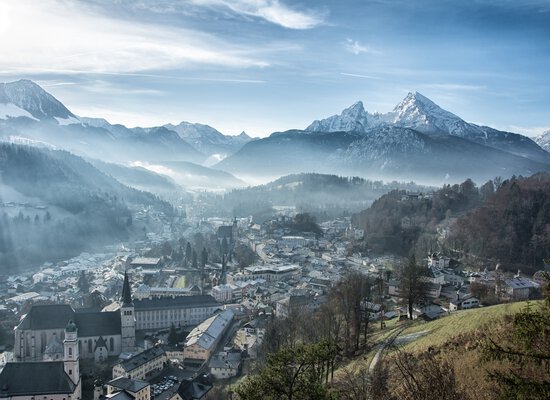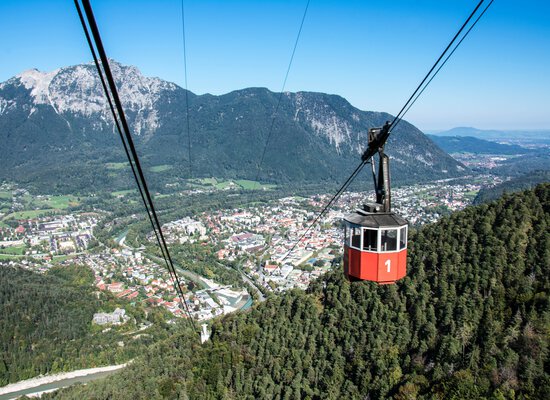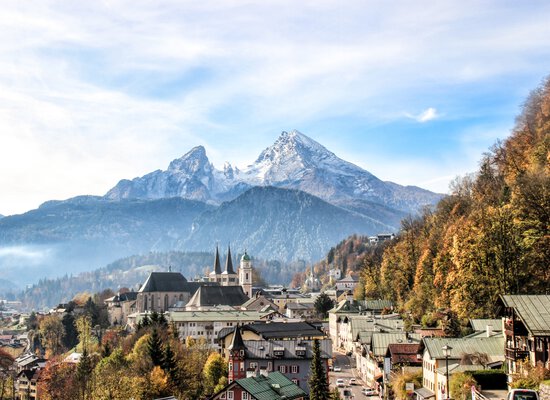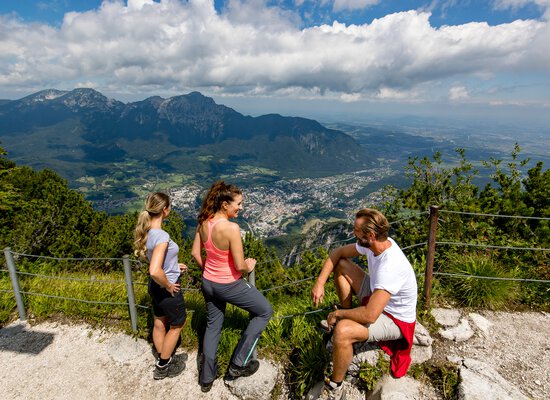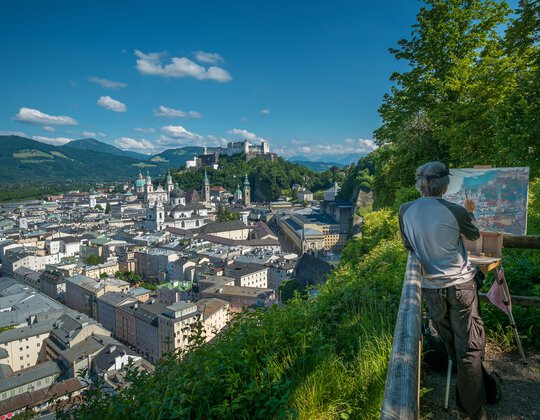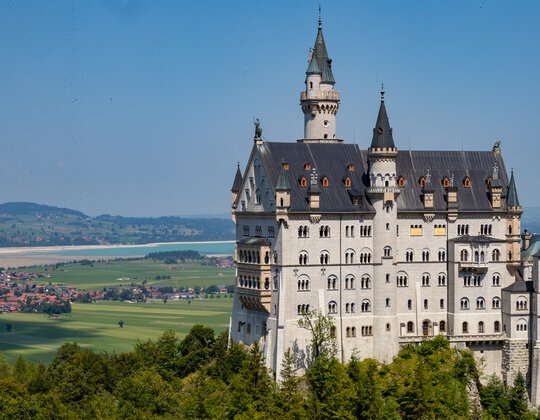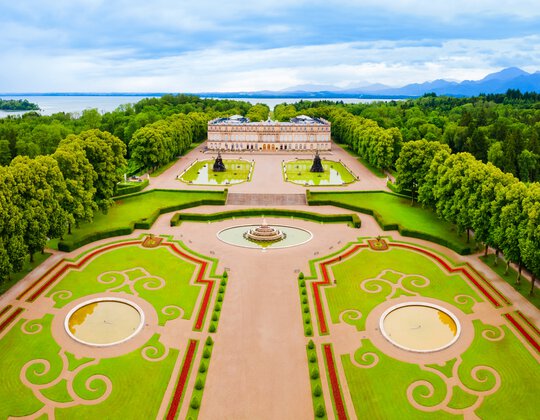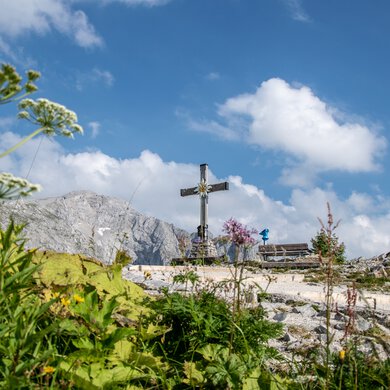
Kehlsteinhaus Berchtesgaden – from Hitlers Eagle's Nest to mountain restaurant with panoramic views
High above the Berchtesgadener Land, at 1,834 meters, sits the Kehlsteinhaus – better known internationally as Eagle's Nest Berchtesgaden. This place is not only known for its breathtaking panoramic views, but also for its unique and often misunderstood history. For many, it is “Hitler's house in the mountains” but the truth is more complex and fascinating.
The history of the Obersalzberg: Eagle’s Nest vs. Berghof
The history of the Eagle’s Nest is inextricably linked to the fate of the Obersalzberg. Between 1937 and 1938, the Eagle’s Nest was built as a prestige project on behalf of Martin Bormann. It was intended to serve as a representative venue for state guests. Bormann himself supervised the construction, which was completed in just 13 months. The house was to be presented to Adolf Hitler on his 50th birthday. Contrary to popular belief, however, the Eagle’s Nest was never Hitler's permanent residence. His real residence, the Berghof, was located lower down on the Obersalzberg. It was here, in this picturesque but also notorious place, that Hitler spent much of his time, made political decisions, and received high-ranking guests. The Berghof was his retreat and the center of his power in the Alps. After the war, the Berghof was destroyed by the Allies to prevent it from becoming a pilgrimage site for neo-Nazis. Today, only a few remnants of its foundation walls remain. The Eagle’s Nest, on the other hand, survived the bombing almost unscathed. It was a symbol of the Nazi regime— a place where power and architectural superiority were to be demonstrated. Hitler himself is said to have stayed there only about 10 to 20 times, as he suffered from vertigo and found the long journey uncomfortable. After the war, the Allies used it as a command center before it was opened to the public as a mountain restaurant in 1952.
A masterpiece of engineering: Getting there and the Eagle’s Nest elevator
The journey to the Eagle's Nest is an experience and a testament to the technical finesse of its builders. The Kehlsteinstraße winds its way steeply up the mountain for 6.5 kilometers. As it is closed to private traffic, the only way to get there is by special buses that depart from the parking lot at Obersalzberg. After the drive, the absolute highlight awaits: a 124-meter-long tunnel takes you into the heart of the mountain, where the spectacular Kehlsteinhaus elevator is located. In a cabin clad in sparkling brass and Venetian mirrors, you will cover the last 124 meters of altitude in just 41 seconds to reach the interior of the house. This ride in a unique, originally preserved technical structure is an unforgettable part of the experience.
The Eagle’s Nest today: hiking or a relaxed journey?
Today, the Eagle’s Nest is a mountain restaurant with a sun terrace offering one of the most beautiful views in the entire Berchtesgaden region. The view stretches from the majestic Watzmann to Königssee and the city of Salzburg. At the same time, it is a place of remembrance. A small exhibition inside the building provides information about the role of the building during the Nazi era and the history of the Obersalzberg. For the more athletically inclined, there is the option of reaching the Eagle’s Nest via various hiking trails, for example from the Ofnerboden car park or from the Obersalzberg Documentation Center. However, those who prefer a more comfortable option can travel directly from Munich with our tour and sit back and relax.
Experience history: The Obersalzberg Documentation Center
To fully understand the historical significance of the Eagle’s Nest and the Berghof, we recommend visiting the Obersalzberg Documentation Center. This memorial site is dedicated to examining Nazi history at the place where it happened. It sheds light on life in Hitler's private surroundings and the history of the entire Führer's restricted area. Here you will gain profound insights into the propaganda, power structures, and crimes of the regime. Our tour includes a visit to this important site.
Frequently asked questions about the Eagle's Nest
1st How much does it cost to enter the Eagle’s Nest?
The admission price varies but is usually around €35 per adult. It includes the return trip by bus and use of the Eagle’s Nest elevator.
2nd Can you also hike to Eagle’s Nest?
Yes, there are various hiking trails to the Eagle’s Nest, starting from the Obersalzberg Documentation Center or Ofnerboden. Depending on the route, the hike takes 2 to 3 hours and requires sturdy shoes.
3rd How long does the bus ride to Eagle's Nest take?
The bus ride from the Obersalzberg parking lot to the bus turning point takes about 20 minutes.
4th Is the Eagle’s Nest open in winter?
No, the Eagle's Nest is usually open from the beginning of May to the end of October. The road is closed during the winter months for safety reasons. The exact dates depend on the weather.
5th What is the difference between the Eagle's Nest and the Berghof?
The Berghof was Adolf Hitler's residence and was destroyed after the war. The Eagle’s Nest was purely a representative building, which remained intact and now serves as a mountain restaurant.



